
Community Artworks
Nature inspired artworks have appeared in green spaces across Gwent, inspiring more people to value the nature we can find in our communities. The pieces were developed as part of the Nature isn’t Neat project, which aims to raise awareness of the decline in pollinators and encourage local action.
Over the summer of 2022, communities designed and built mosaic artworks which reflect the beauty of nature in their local green spaces.
They were developed by mosaic and visual artist, Stephanie Roberts to create a lasting legacy to the Nature isn’t Neat campaign. Each sculpture is inspired by a local plant and pollinator species, which can be seen in the mosaics. We held two workshops where communities helped design and build the final artwork that reflects the nature that surrounds them.
The artworks are situated across Gwent, in Gilfach, Bargoed, Bryn Bach Park, Tredegar, Rogerstone Welfare Grounds, Rogerstone, Fairhill, Cwmbran.
Cabinet Member for Climate Change and the Environment, Cllr Catrin Maby said: “The new artworks are fantastic and provide a lasting testament to Nature Isn’t Neat and the positive effect its principles have had on wildlife and pollinators across Gwent.”
“The selective mowing approach that allows grasses and wildflowers to thrive for longer is supporting pollinators and a diverse range of wildlife generally. To have the community come together to help celebrate this through a community led artwork is truly wonderful.”
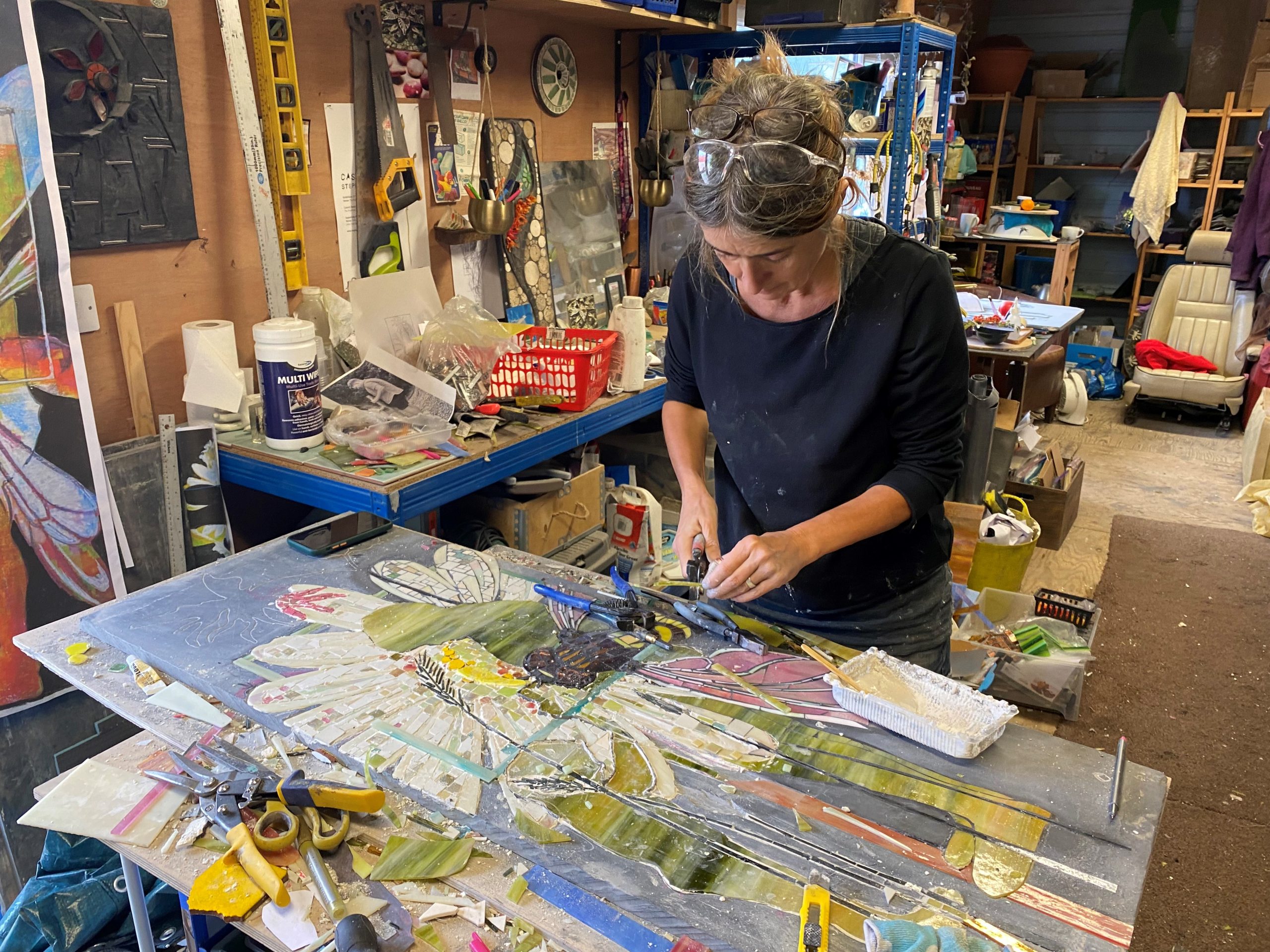
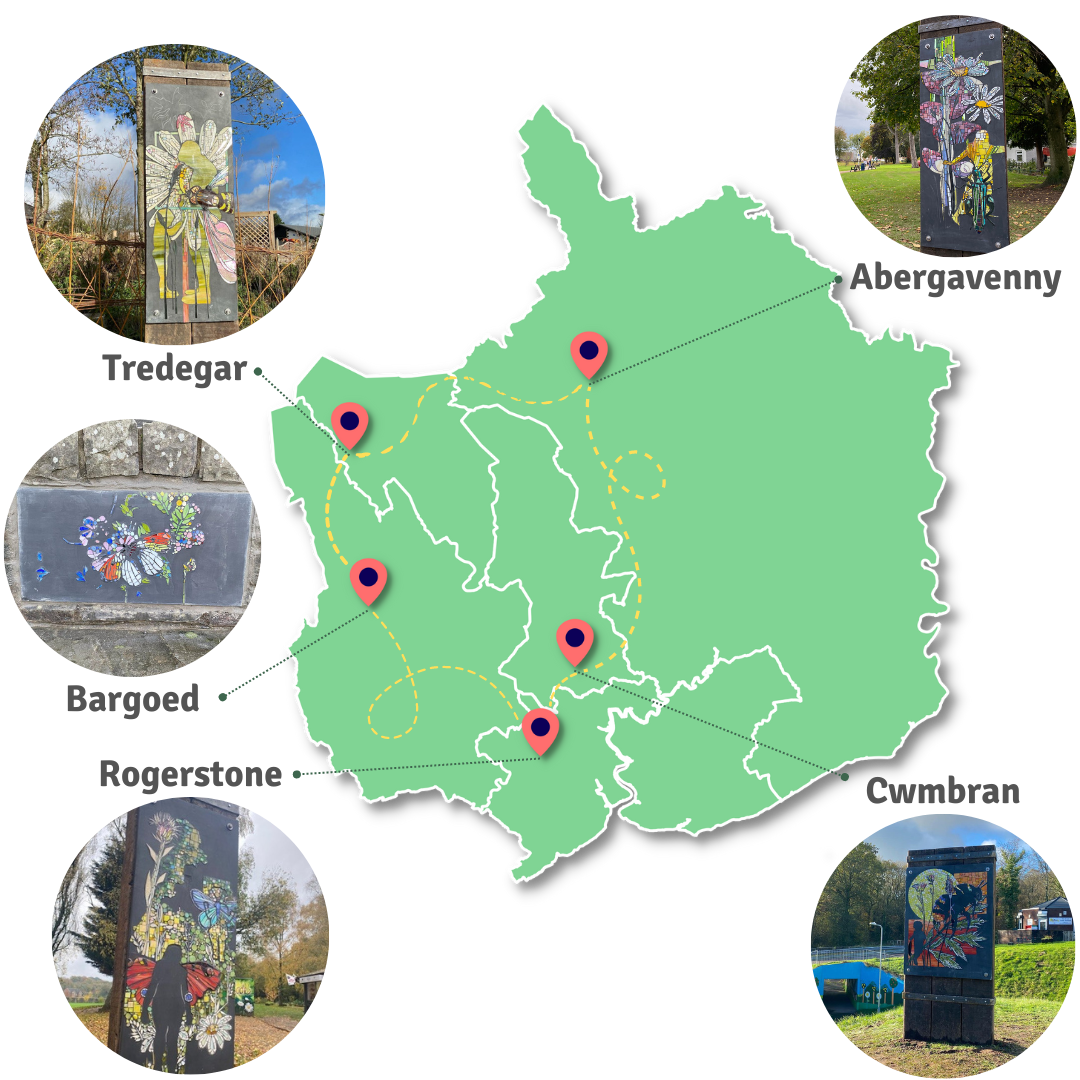
Sculpture Trail
Why not go and find all the sculptures for yourself, follow our sculpture trail to see all five sculptures and see what wildlife you can spot along the way too!
Each sculpture is inspired by a local plant and pollinator species, which can be seen in each mosaic.
Monmouthshire
Bailey Park – Abergavenny
Bailey Park, Abergavenny is home to the Monmouthshire sculpture, and you will find it located near to the Rugby Club. The mosaic celebrates the humble daisy and its role for pollinators with an iridescent thick-legged flower beetle stealing the show.
The oxeye daisy (Leucantheum vulgare) flowers between June and September. Easily identified by its large flower heads that appear on tall single stems. The oxeye daisy thrives on road verges and waster ground as well as meadows.
The thick legged flower beetle (Oedemera nobilis) gets its name from the male beetles swollen back legs used to impress the females. These beetles can be seen from April to September across Wales pollinating wildflowers.
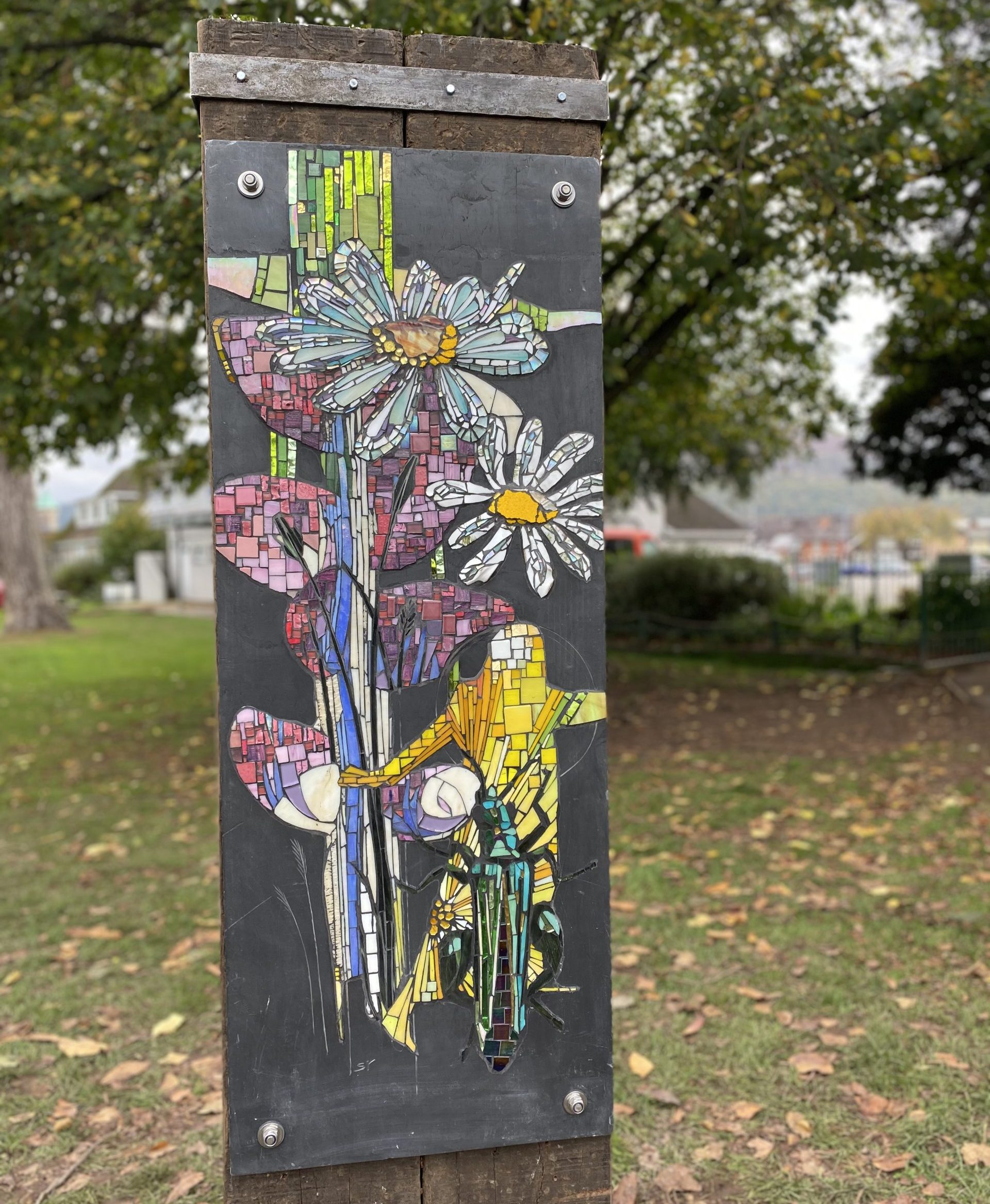
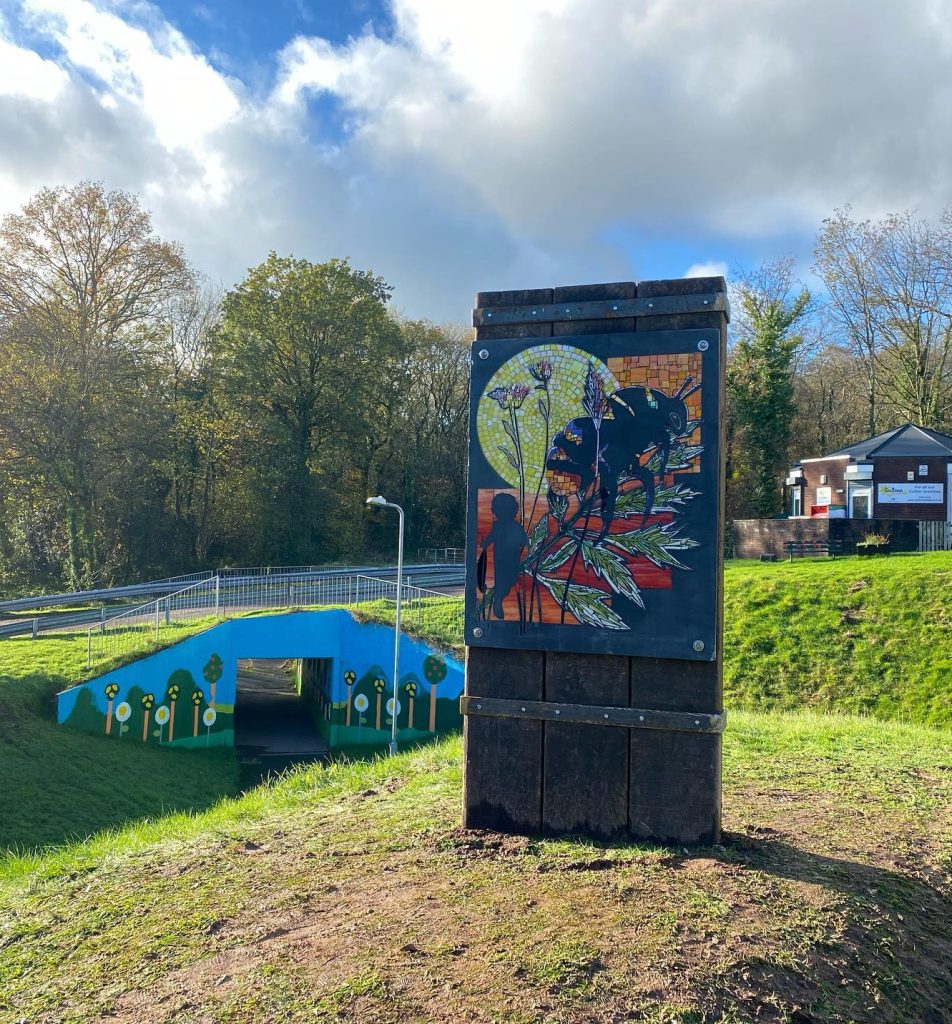
Torfaen
Fairhill – Cwmbran
Fairhill, Cwmbran is home to the Torfaen sculpture, located on a Bron Afon Housing Association estate near the Costar Community Centre. Bron Afon has been leading the way in managing their land for nature, and leading the way in Wales with their contribution to restoring the environment. The mosaic depicts a red-tailed bumblebee and the beautiful field scabious.
Field scabious (Knautia arvensis) is a stunning wildflower and a member of the teasel family. It is also know as lady’s pin cushion and blue bonnets.
Red-tailed bumblebees (Bombus lapidarius) live up to their name with an easily identifibale red fluffy tail. Commonly seen between April and November, these bumblebees nest underground in the winter often in old vole burrows or under stones.
Newport
Rogerstone Welfare Grounds – Rogerstone
Rogerstone Welfare Grounds is where the Newport sculpture is located, close to other community projects at the site. This sculpture showcases common knapweed and the beautiful common blue butterfly.
Common knapweed (Centaurea nigra) has thistle-like purple flowers. Found on all kinds of grasslands, it attracts a wide range of butterflies.
The common blue butterfly (Polyommatus icarus) is a stunning small butterfly that can be seen between April and October found in a variety of habitats. Look out for them in your garden too!
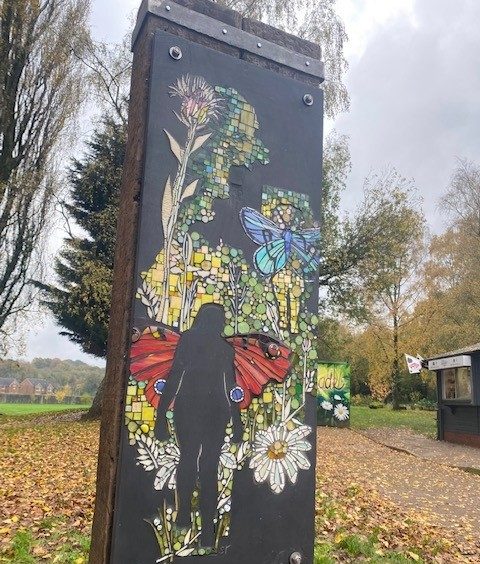
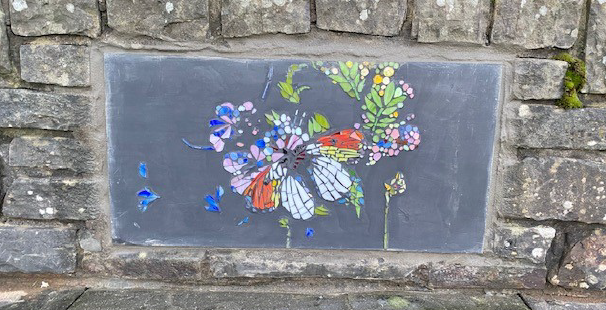
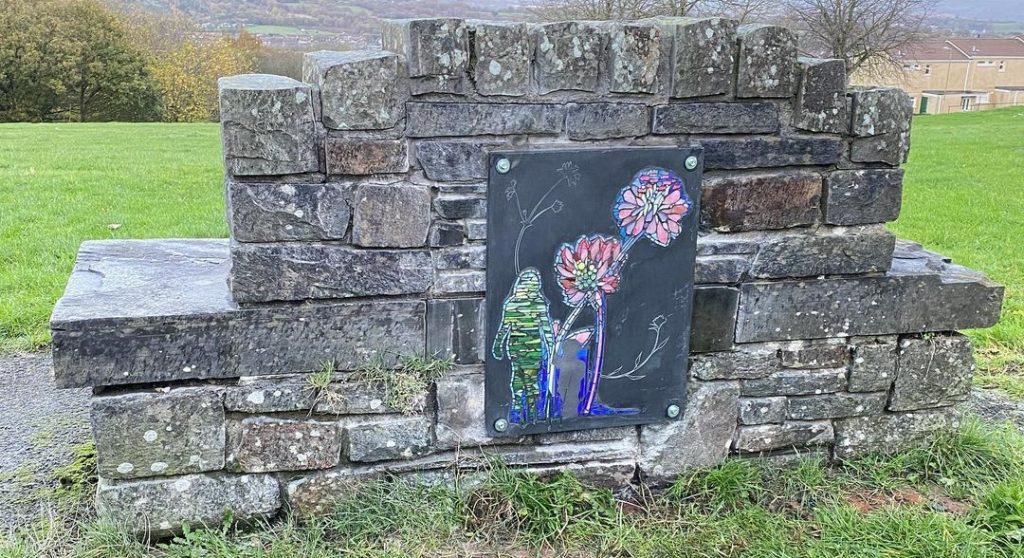
Caerphilly
Gilfach – Bargoed
The Caerphilly sculpture sits in Gilfach, forming part of a stone bench that looks out over panoramic views of the county. The artwork here illustrates pretty cuckooflowers and the orange-tip butterfly.
The delicate cuckooflower (Cardamine pratensis) is a springtime favourite that grows along riverbanks and damp places such as meadows and ditches. The blooming flowers are thought to coincide with the arrival of the first cuckoos in April. Orange-tip butterflies (Anthcharis cardamines) are easy to spot between April and July thanks to the distinctive orange tips on the male’s wings. Their favourite plants include cuckooflower and hedge mustard. The females have grey-black wingtips instead of orange.
Blaenau Gwent
Parc bryn Bach – Tredegar
The wonderful Parc Bryn Bach is home to the Blaenau Gwent sculpture, a fitting place to celebrate local nature. This artwork shows a marmalade hoverfly amongst ragged robin and oxeye daisy flowers.
The ragged robin (Lychnis flos-cuculi) flowers may look frayed and damaged, but they are actually delicate petals that sway in the breeze. This declining wildflower is found in wet, boggy areas and attracts a range of pollinators throughout the summer.
The marmalade hoverfly (Episyrphus balteatus) gets its name from its bright orange stripes on its body. This species is the UK’s most common hoverfly and can be spotted all year round. Keep an eye out for them hovering in gardens, parks and woodlands.
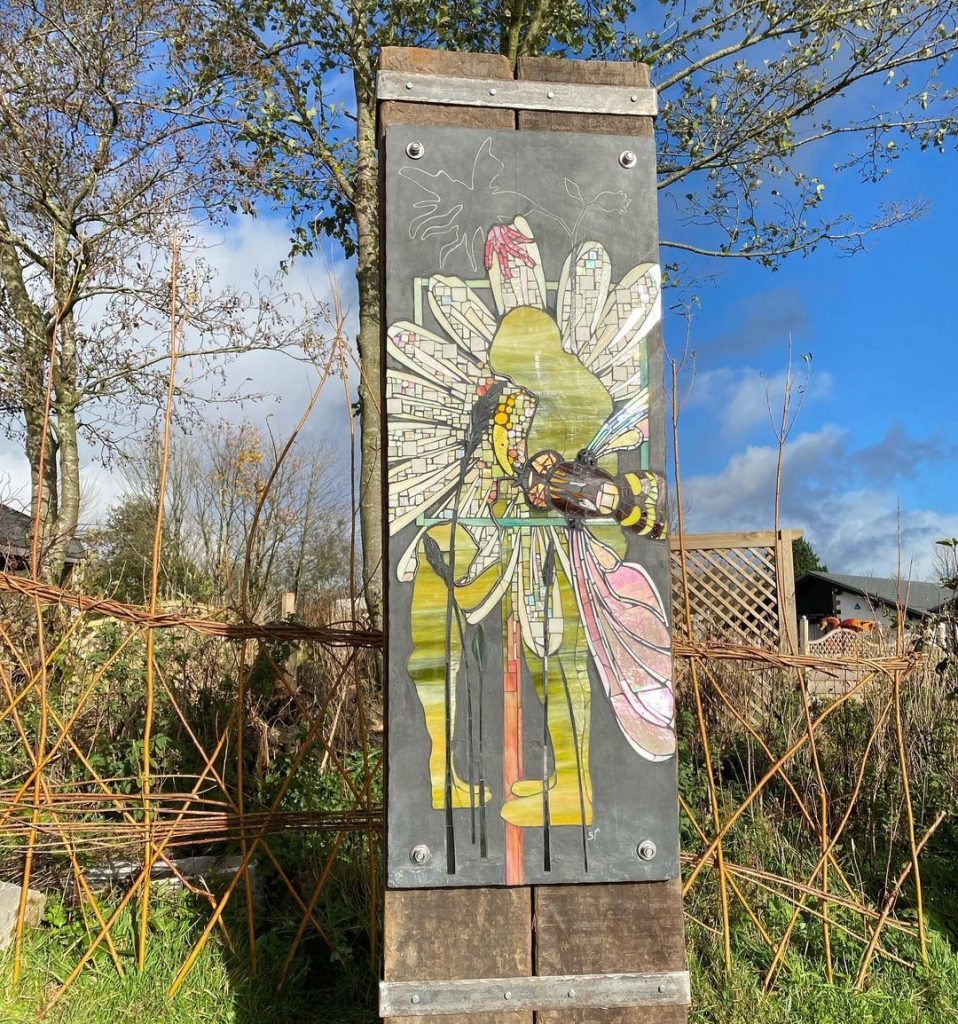
Share your pictures with us when you find a sculpture or the wildlife they celebrate, we would love to see what you find across Gwent, find us on social media and tag us in your photos!
Twitter @Natureisntneat
Instagram @Natureisntneat
Facebook Nature isn’t Neat
This post is also available in: Welsh
